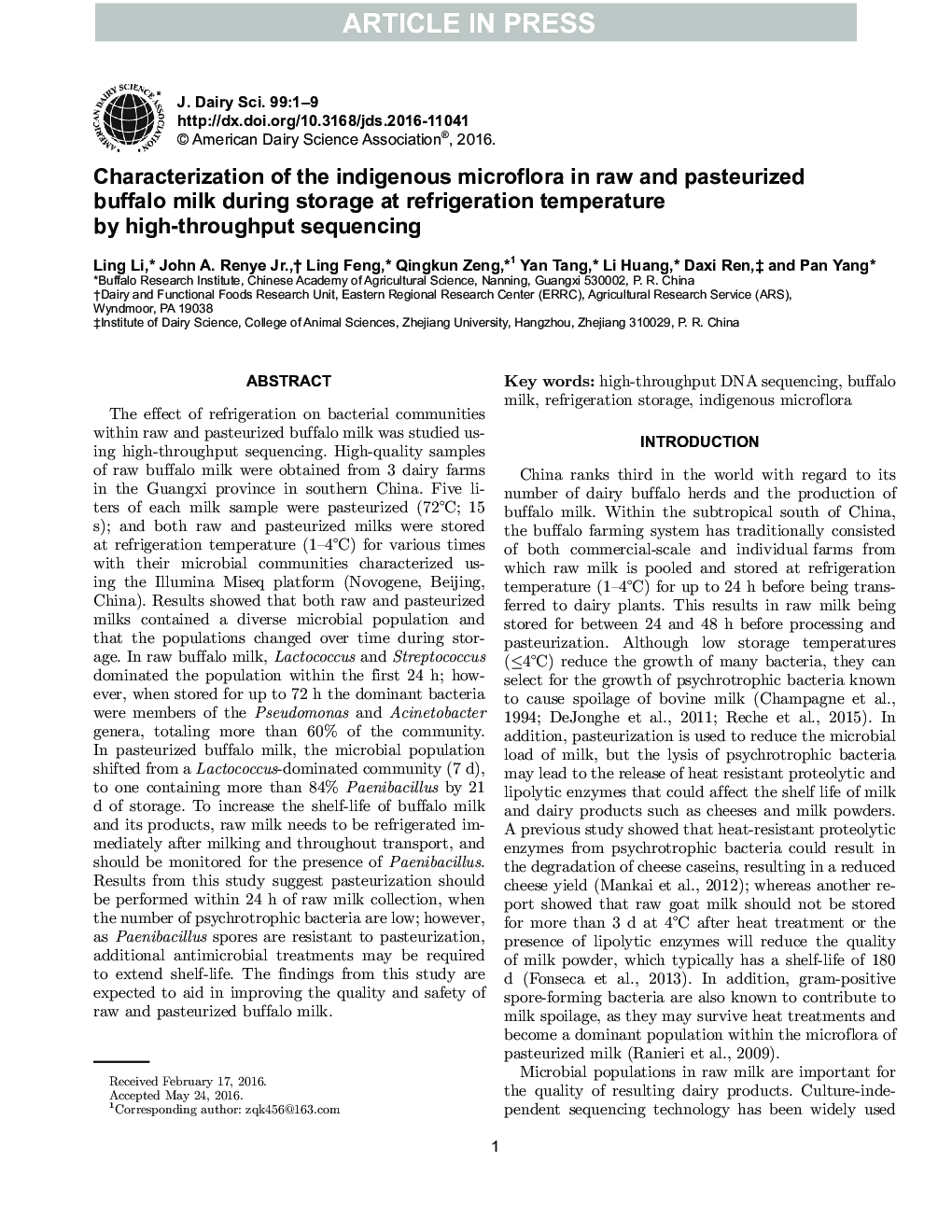| Article ID | Journal | Published Year | Pages | File Type |
|---|---|---|---|---|
| 5542813 | Journal of Dairy Science | 2016 | 9 Pages |
Abstract
The effect of refrigeration on bacterial communities within raw and pasteurized buffalo milk was studied using high-throughput sequencing. High-quality samples of raw buffalo milk were obtained from 3 dairy farms in the Guangxi province in southern China. Five liters of each milk sample were pasteurized (72°C; 15 s); and both raw and pasteurized milks were stored at refrigeration temperature (1-4°C) for various times with their microbial communities characterized using the Illumina Miseq platform (Novogene, Beijing, China). Results showed that both raw and pasteurized milks contained a diverse microbial population and that the populations changed over time during storage. In raw buffalo milk, Lactococcus and Streptococcus dominated the population within the first 24 h; however, when stored for up to 72 h the dominant bacteria were members of the Pseudomonas and Acinetobacter genera, totaling more than 60% of the community. In pasteurized buffalo milk, the microbial population shifted from a Lactococcus-dominated community (7 d), to one containing more than 84% Paenibacillus by 21 d of storage. To increase the shelf-life of buffalo milk and its products, raw milk needs to be refrigerated immediately after milking and throughout transport, and should be monitored for the presence of Paenibacillus. Results from this study suggest pasteurization should be performed within 24 h of raw milk collection, when the number of psychrotrophic bacteria are low; however, as Paenibacillus spores are resistant to pasteurization, additional antimicrobial treatments may be required to extend shelf-life. The findings from this study are expected to aid in improving the quality and safety of raw and pasteurized buffalo milk.
Related Topics
Life Sciences
Agricultural and Biological Sciences
Animal Science and Zoology
Authors
Ling Li, John A. Jr., Ling Feng, Qingkun Zeng, Yan Tang, Li Huang, Daxi Ren, Pan Yang,
